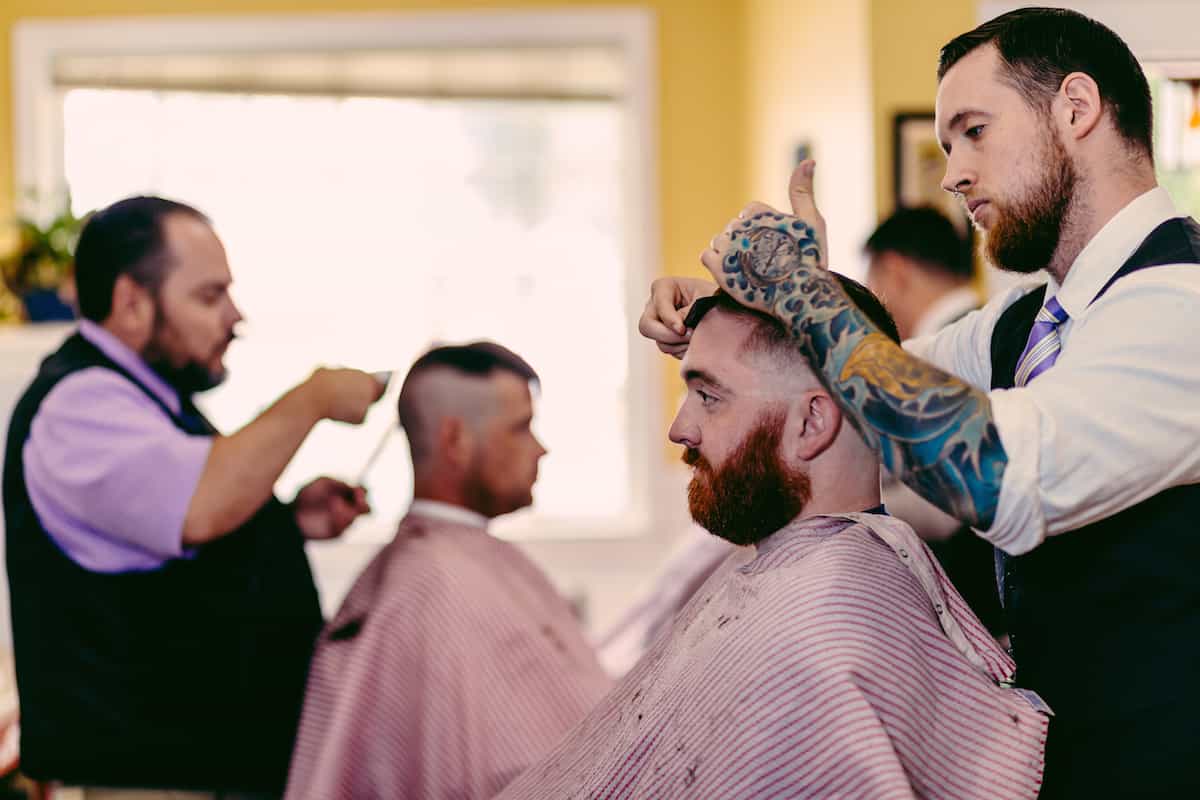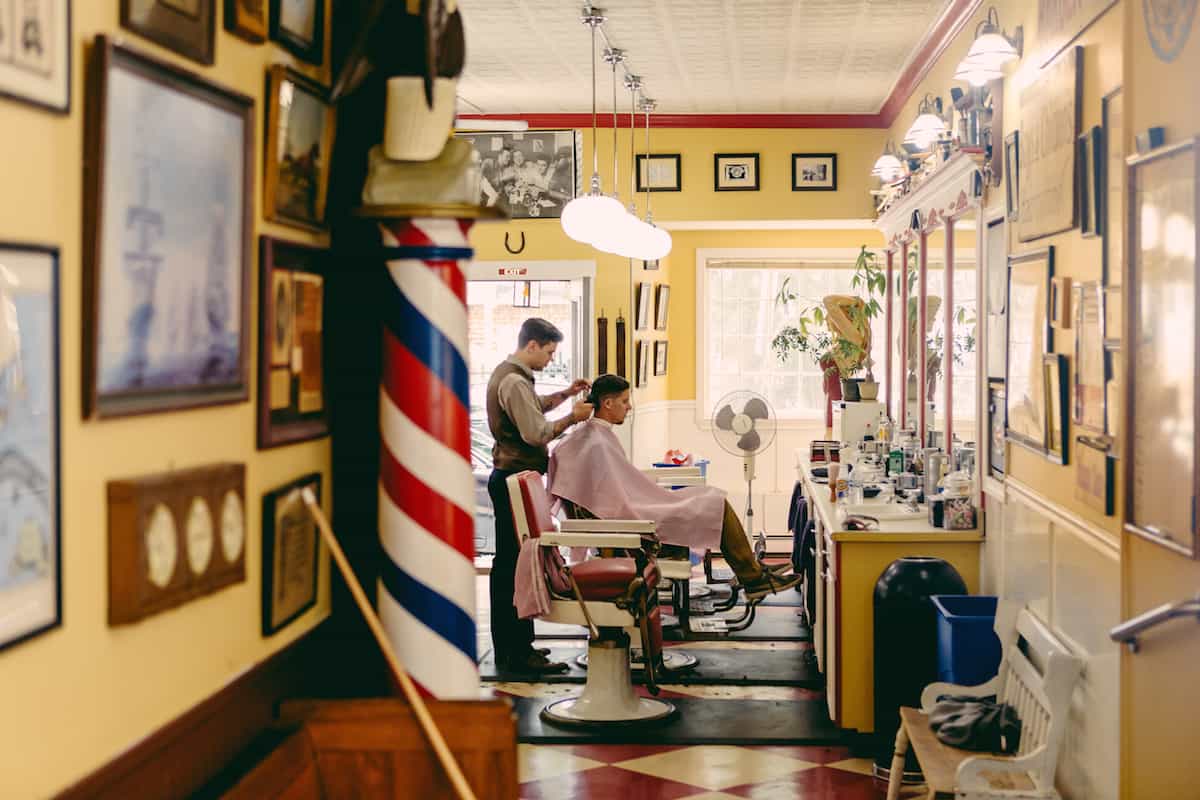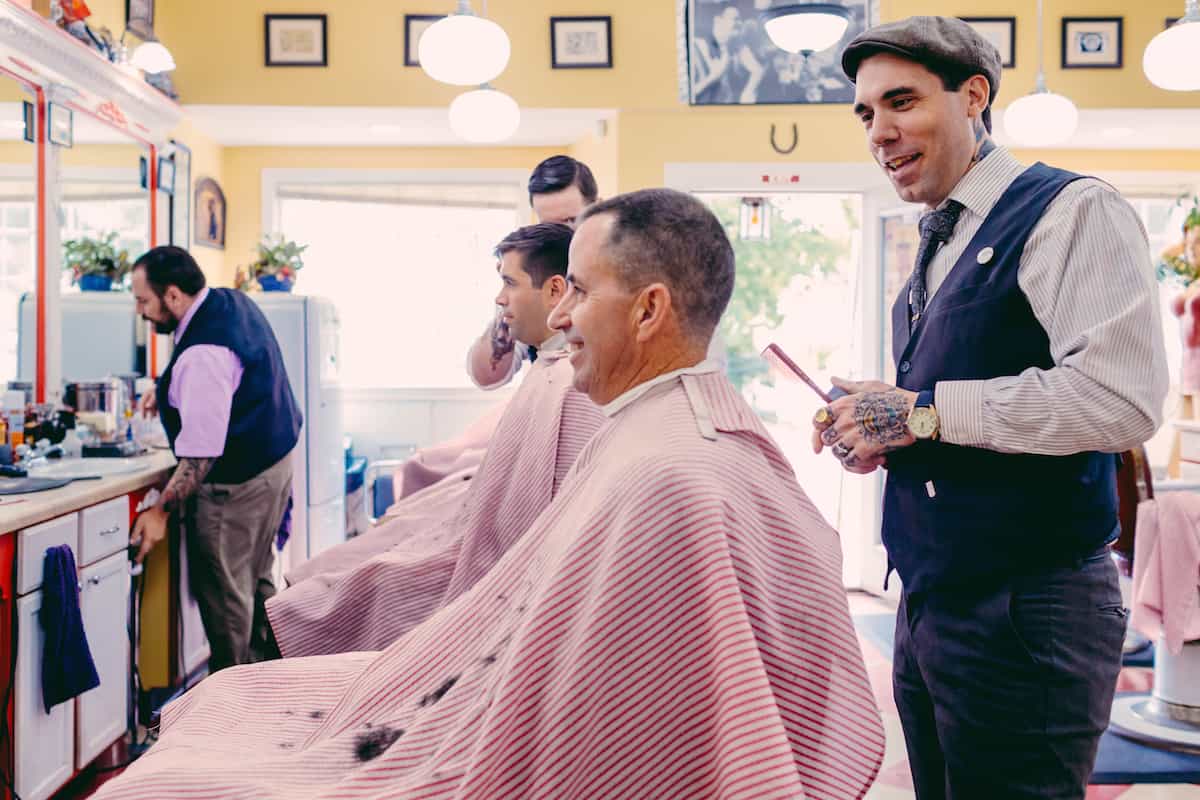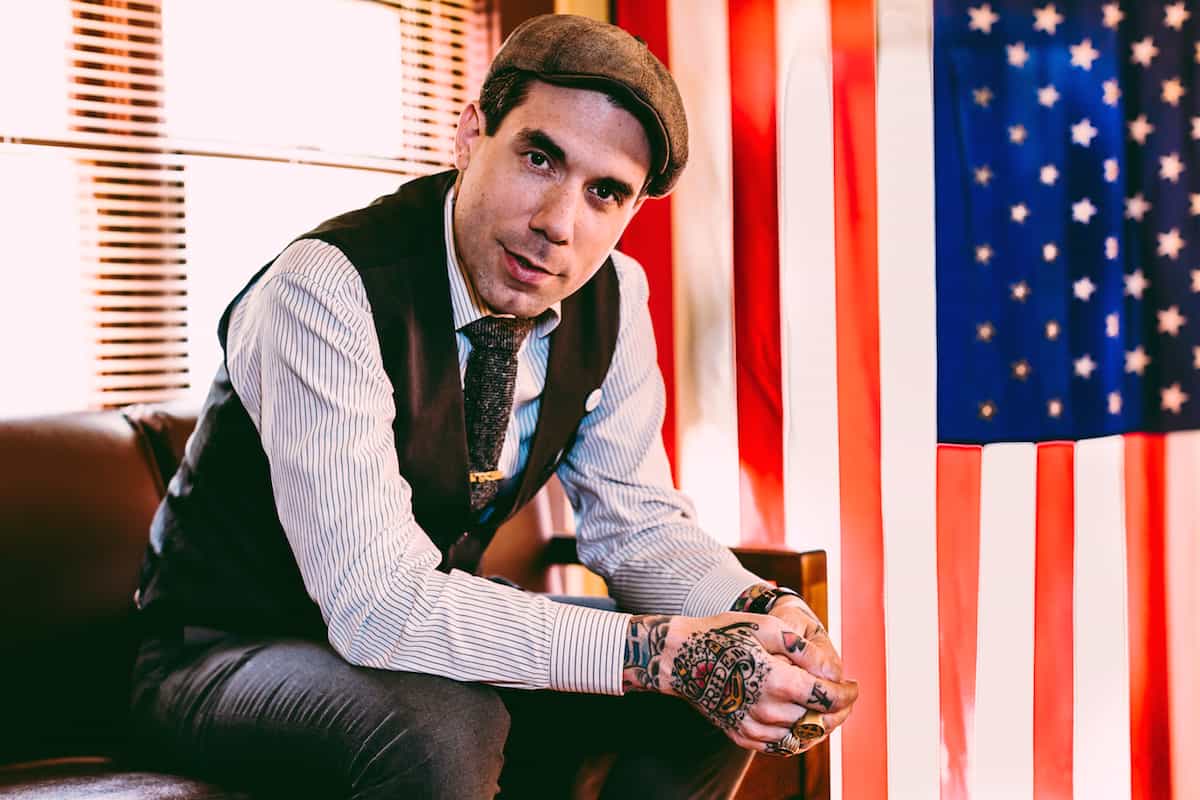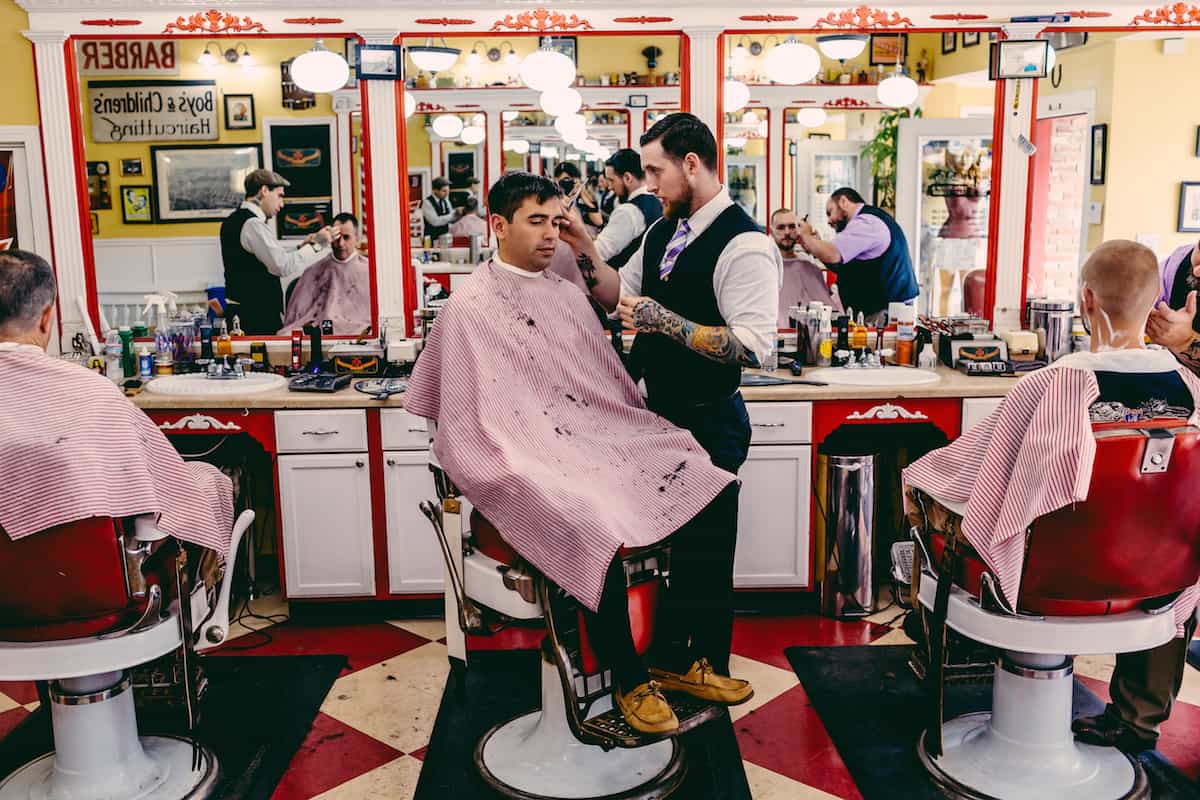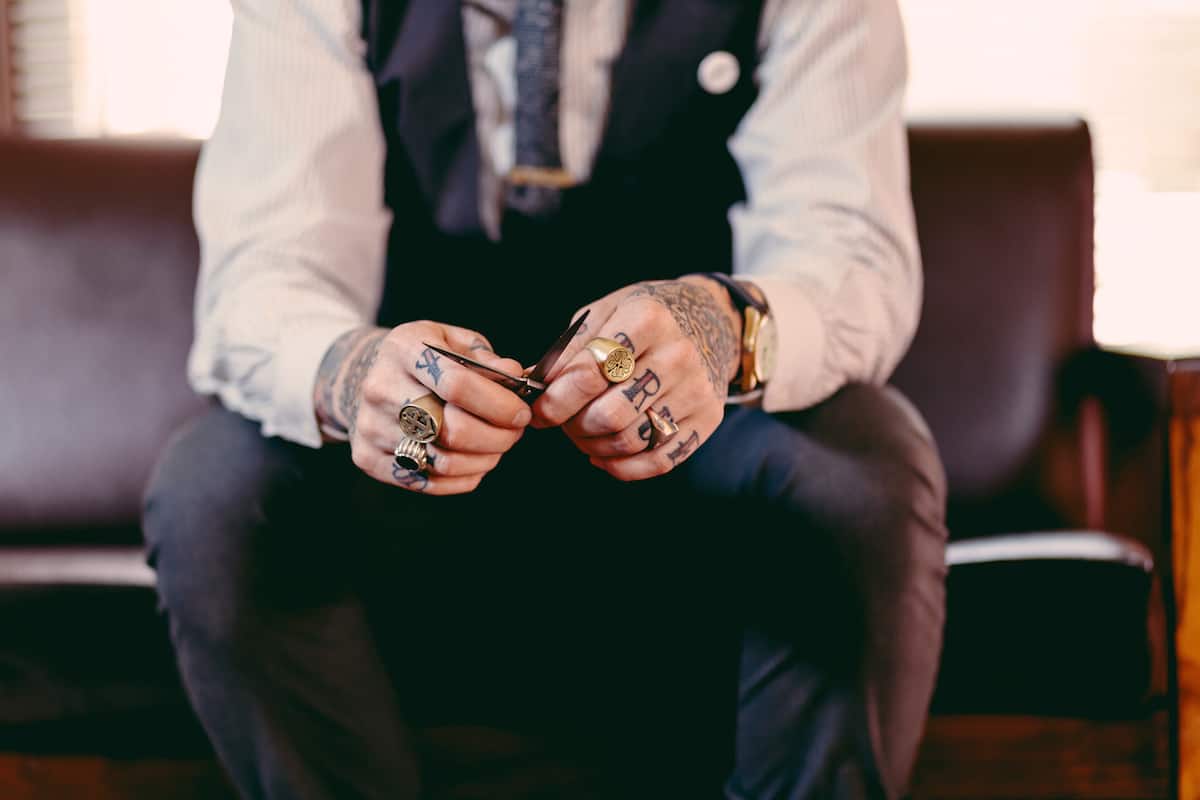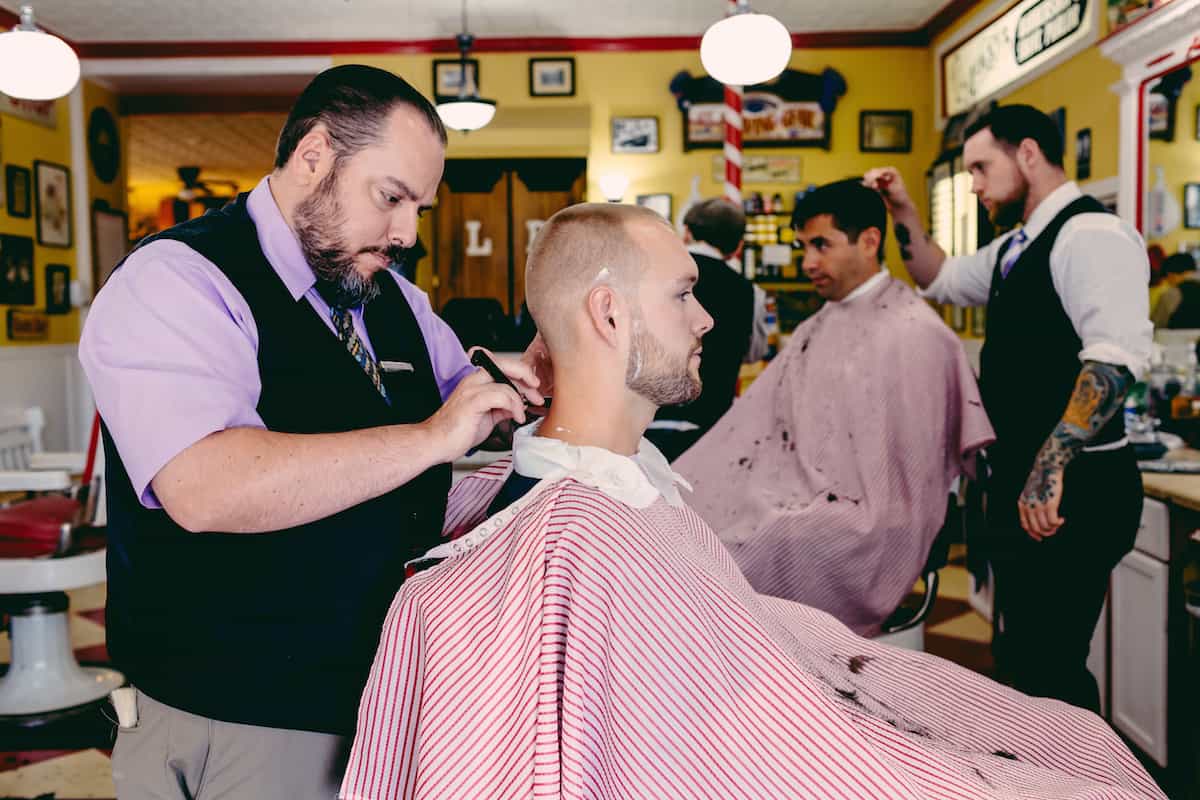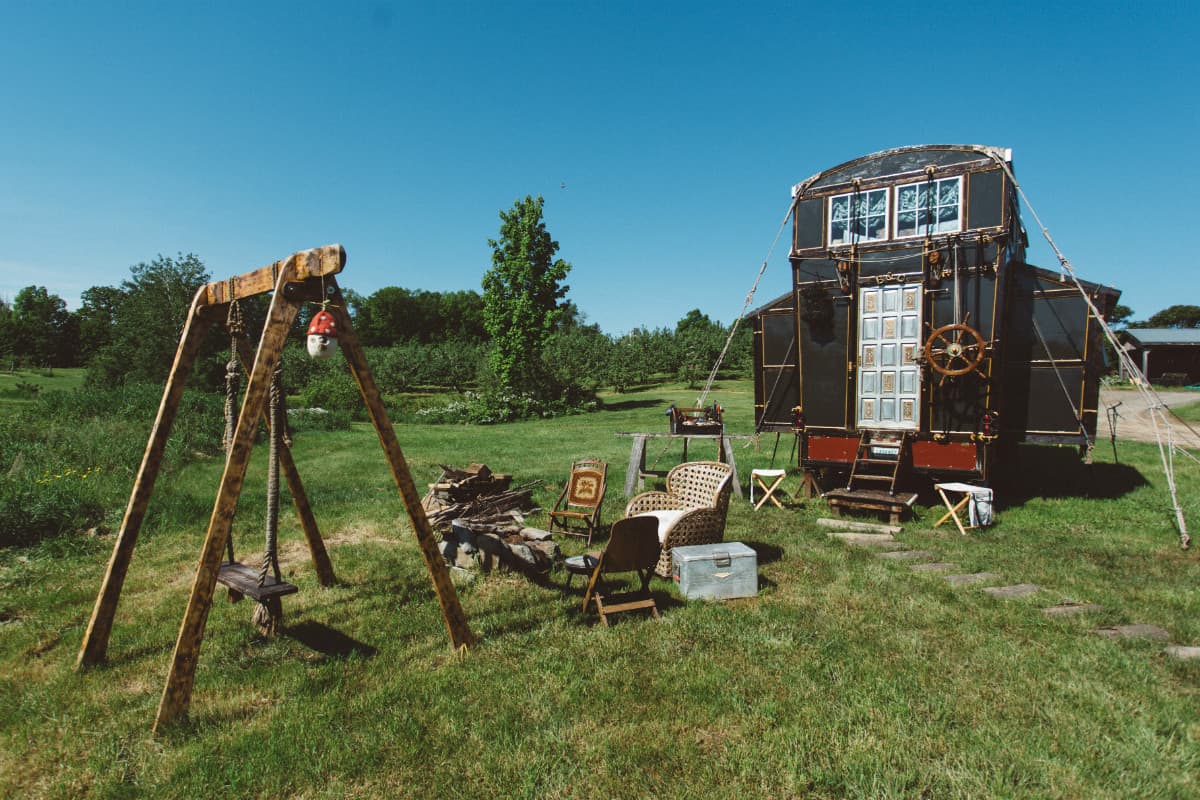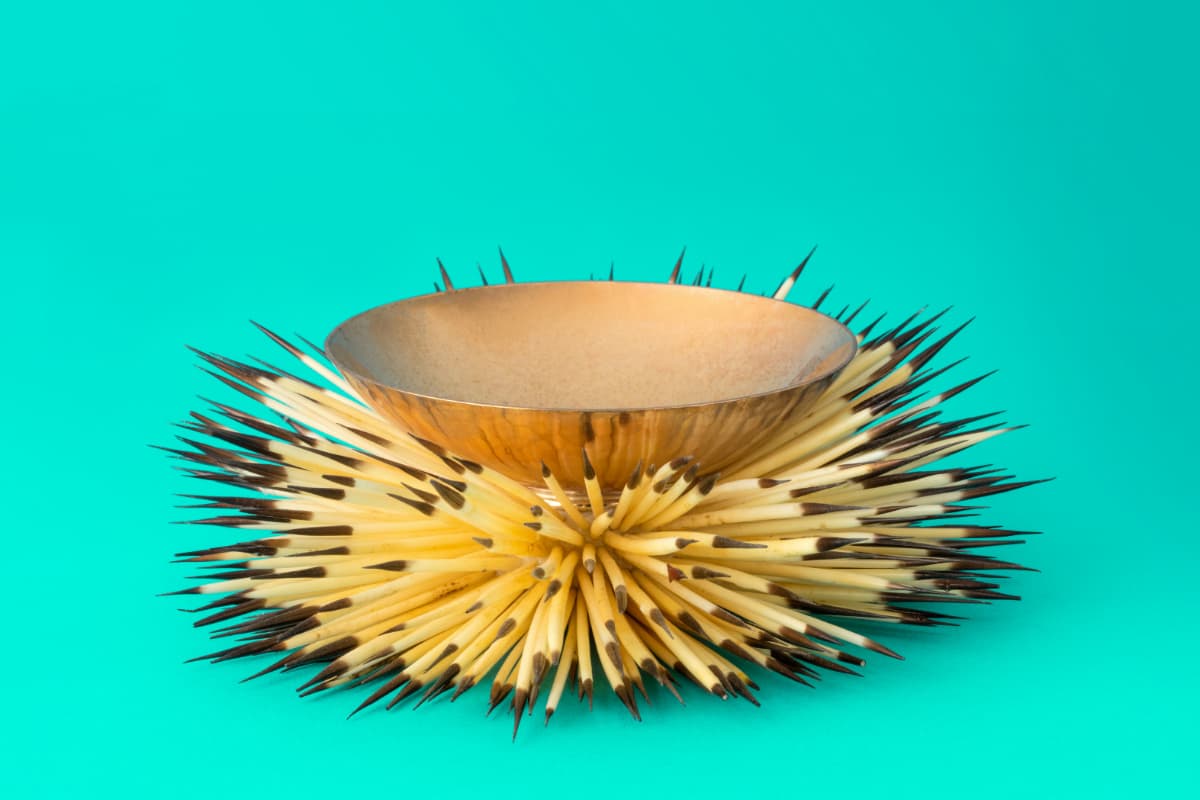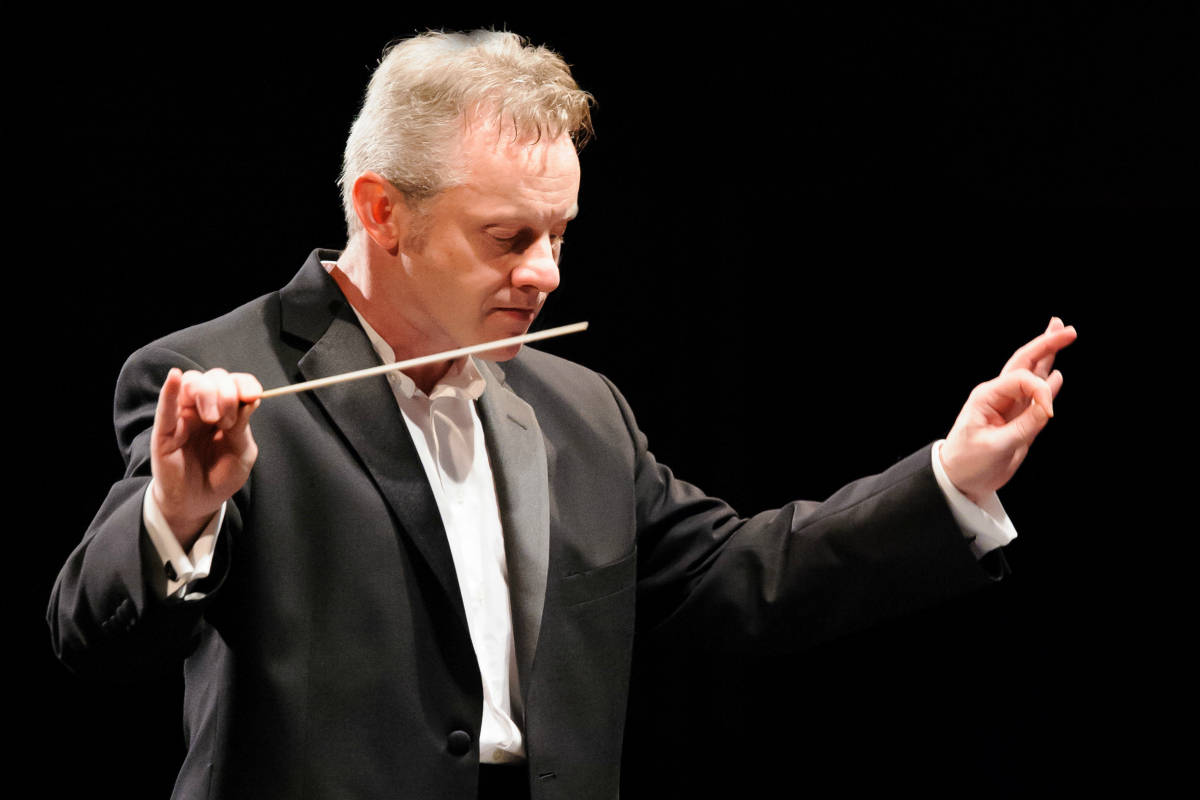“You wanna talk dying trades? I was 20 years old, and I learned to barber from guys in their 70s. The things I learned. . .the people I met. . .”
This article originally appeared in our November 2015 print issue.
These are the things you can learn while you wait to get a shave and a haircut at Lucky’s Barbershop and Shave Parlor in Concord, New Hampshire: Particles pulled toward a black hole compress and heat to more than 10 million degrees. There are more than 750,000 words in the Bible, and a monk can spend years making one copy. The car on the cover of Hot Rod magazine in July 1961 was the same car that was on the cover of the Beach Boys record Little Deuce Coupe.
You’ll pick up nifty minutiae like this from the hundreds of antique and kitschy books that line the huge, dark wood bookshelf in the back of the barbershop’s bright, retro-chic waiting area. You’ll have written your name on the dry-erase board, so now you’re waiting for your name to be called. You’re totally aware that it could be a long wait—maybe 45 minutes—but you’ll have those books. Plus there’s a chance you’ll fall into conversation with the person sitting next to you. If you don’t know him, you probably know someone he knows.
You’ll hear old-school punk (The Replacements, Mission of Burma) and chill pop electronica (Lana Del Rey). At some point, one of the easygoing, soft-spoken guys with elaborately tattooed arms and a comb in his back pocket will look at the board, walk into the room, and call your name. He’ll extend his hand for a shake and lead you to one of the nearly century-old barber chairs; drape you with a cape; ask, “Whatcha need?”; and get to work.
“There’s a new resurgence of people who want their money to go a long way, and that’s brought notice to old-school things that would’ve gone away,” muses Josh Craggy, who opened Lucky’s in 2008 across from a florist who’s been there 100 years, on a quiet road a few blocks from Concord’s main street. “You wanna talk dying trades? I was 20 years old, and I learned to barber from guys in their 70s. The things I learned. . .the people I met. . .In the past almost-eight years since I opened, I could tell you thousands of stories. When you think about how many people sat in those chairs. And the chairs are 80 to 90 years old. If chairs could talk. . .”
Barbershops and salons hold a very significant place in American culture. Historically, barbershops in black communities have served as meeting spaces and centers of social life, much like churches, especially during the Great Migration. In 2013 Vassar professor Quincy T. Mills published Cutting Along the Color Line, a book that chronicles black barbershops from before the American Civil War—when black men had to serve white men exclusively—to their contemporary impact as both democratic social spaces and business opportunities in small communities. And who can forget the 2002 movie Barbershop with Ice Cube and Cedric the Entertainer, a poignant cultural commentary in its own right? There’s similar cultural heft to American salons, particularly in the South, where they have been known to provide therapeutic value and emotional support networks. (See Steel Magnolias.)
Craggy, a Concord native, has slick black hair that evokes the greasers of the 1950s and a tattoo on his neck of a five-card spread—four aces and a card that says “Lucky.” Inked letters on his knuckles spell out “stay” on one hand and “true” on the other. He modeled Lucky’s on an entirely different version of the institution: the grand Victorian-era barbershops of the late 1800s, which were often located in hotels. The chairs, he pointed out, are from the 1920s, a Craigslist score. The shop’s color scheme—yellow, sandstone, creams, and red—is a nod to the warm, earthy palate of the Midwest of that era. Alabaster-white wood frames around the mirrors hark back to the way barbershops signified cleanliness. Gorgeous sinks are set in countertops at each station, most of which are strewn with scissors, razors, old-timey bottles of Bay Rum, tins of powder, and shiny steel shaving cream dispensers.
“If a customer is sitting in a chair, you have to ask: What’s comfortable and relaxing? You have to take that into account,” he says of the way he designed the space. “I want customers to come in and hang out.”
And they do. Haircuts, after all, are a great equalizer—there’s no judgment or hierarchy in the business. On a Wednesday in July, customers include men in Tevas, Converse, hiking boots, and wing tips. There is a priest (a regular), a fireman, a 19-year-old studying finance at a nearby college, and a waiter, among others. Around 3:00 p.m., Craggy looks at the board and calls, “Isabella.” A 10-year-old with long brown locks comes running to him. “You ready to rock and roll?” he asks as he gives her a high five. Isabella is accompanied by her grandmother, Deb, whose son, Isabella’s father, went to school with Craggy; Craggy was his best man.
“People come here, hang out. Everyone comes to Lucky’s,” Deb tells me. “Since this started, it’s been Josh’s heart and soul. It’s a small town, so people come in with their whole family. Lots of times everyone talks to each other. Everyone knows each other. All it needs is a couple of benches out front.”
Ask Craggy how he got into barbering, and he’ll tell you a story seemingly composed for a Norman Rockwell illustration. It goes like this: His dad was never much of a patient man. He had an old clipper that rattled a lot. As Craggy recalls, he’d “hose the thing down with WD-40 to get it to purr.” One day when Craggy was 12, his dad took off his shirt, pulled a towel around his shoulders, and commanded his son to “cut!”
“He had super-short hair, and this woolly white hair just fell to my feet. I was like, ‘Wow. I love this,’” Craggy reminisces. “Pretty soon I was calling everyone I knew and offering to cut their hair.” It was nothing more than a hobby as he coasted through his teenage years, playing in punk bands and driving across the country. In the late 1990s, when he lived with some friends in a creaky Victorian across the street from where the shop sits, he set up a space and provided services. It never occurred to him to make a career of it.
“My buddy said, ‘Don’t you gotta be an older guy for that?’ And I thought: those older guys musta been younger guys at some point,” he says. “And a lot of guys who started cutting hair in the 1950s were starting to pass away.” Once he realized it was nothing short of a calling, Craggy went out to find training—an ordeal that still exasperates him. Since the late 1970s, there hadn’t been a barber school in New Hampshire, Vermont, or Maine. Instead of fulfilling the 1,500 hours of school required by law to get a license, he’d have to apprentice for 3,000 hours or move out of the state. His pipe dream ended quickly. Instead, he got a job in a local coffee shop. But he kept seeing a commercial about a barbering program that had just launched in a cosmetology school in Manchester, New Hampshire.
“I went to check it out, and there was a super-heavy, Tina Turner–like white Italian woman, and she was like, ‘You gonna be the next generation of barbers. You got that?’” he recounts, impersonating her no-nonsense tone and shrill accent. He completed his schooling there, passed the boards, and got a job with a pair of Korean War vets back in his hometown. Under their tutelage, he not only honed his skill; he became an accidental sociologist of sorts.
“If you wanna start a fight, talk about The Beatles,” Craggy notes, explaining that the Fab Four were terrible for the barber industry. “In the early 1960s, people wanted to grow their hair out. When I got into it, people were wearing their hair shorter. There were a couple mullets still standing strong, and a lotta bowl cuts.” But in the grand scheme of things, those quibbles represent changes in attitude, not revolutions.
“Styles come and go. Sure, we have electricity now, but implements in this business are all the same,” he says, picking up a simple straight-edge razor and examining it like a jeweler inspects a diamond. “It’s still a little piece of history. By my watch, no robot will replace me. Even with all the technology in the world, you can’t imitate this.”
Remarks like that aren’t just an expression of pride in his work. If he had his way, Craggy wouldn’t even use electricity. He’s a member of what you might call the holdout culture—adhering to a retro lifestyle not just as a fashion statement or a trend validated by the New York Times’s Sunday Styles section, but as an unassailable philosophy rooted in simplicity and sincerity. He doesn’t have a computer, and he doesn’t like to use them either (“My brain is like a gerbil when there’s too much information.”). He has a smartphone, but he doesn’t use it to its full capacity (“You buy apps?”). And he gets noticeably upset when social media comes up in discussion (“The social media world is nothing I belong to.”). But social media also astounds him: he marvels that a company in Orange County, California, that makes vintage-style pomade found the shop’s Instagram account and sent free product samples.
What it ultimately boils down to for Craggy is community—a facet of life that was fundamental decades ago, but a goal to be worked toward today. Community, in the world of Lucky’s, isn’t just who’s playing at the local club. It’s about what happened in living rooms, classrooms, and backyards in the past. Craggy has photos of the local Little League teams Lucky’s sponsors on the wall by the cash register. He played baseball in that same field when he was a kid. He wanted to hit a homer behind the sign in the background of the photos.
His infatuation for community is driven by his deep-seated pride in his hometown. Get him talking and he sounds like a local historian, chronicling how the people who revolutionized the railroad followed the Merrimack River, and going as far back as when the King of England’s constituents would come to Concord to cut the region’s giant pine trees to make masts for ships. The granite from quarries five minutes from the shop was used to build monuments to the Founding Fathers in Washington, DC. New Hampshire has the longest continuously operating legislature in the United States. The iconic Concord Coach was made down the street and shipped around the world. And so on.
It’s all nifty minutiae Craggy’s picked up from chatting with people.
“If you take the haircuts out of a barbershop, what you have is people getting together to bounce ideas off each other and share common sentiments. It’s a congregation. You can take an airplane from any point to any other. You can e-mail someone you might not ever meet. People love tools that connect us,” he says, picking up his smartphone. “Life, in some way, gets a little more interesting with everything at your fingertips. But does it really matter if you can’t see people’s faces?”

